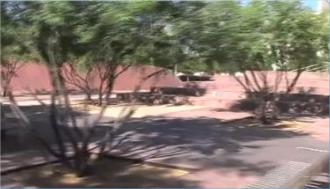The Strategic Circulation of Digital Video
If handled artfully, using digital video to articulate the program's mission to multiple audiences—where secondary audiences are aware of the primary audience—can magnify the benefits of the video by working simultaneously to link those audiences, or, in Stuart Hall's (1985) terms, to re-articulate the audiences alongside the program's representation of writing. To make the most of this benefit and to achieve real and lasting accomplishments in representing writing programs on their own terms, we suggest re-articulating existing program practices, whenever possible, to serve at least two functions:
- A re-articulated practice can best be integrated into a program if it replaces another practice that is already important to the wider institution.
- A re-articulated practice must represent the writing program through a type of communication that can exceed its initial and apparent purpose.
Using digital video in place of an existing practice has several benefits. Beyond the initial resource and labor intensive requirements of creating digital videos, WPAs can screen the videos repeatedly in multiple contexts, while also taking advantage of the medium of digital video to make revisions that are relatively simple to execute, producing whole new videos from old material (for example, we readily selected, rearranged, and trimmed clips for this article, then sutured them to clips that were originally from other contexts). If the videos serve a recurrent program function, then the up-front investment becomes particularly worthwhile. This point is best exemplified in our first case, where the University of Arizona Writing Program's incorporation of digital videos into first-year placement advising ensures the routine, institutional recognition of those videos.
In fact, because digital videos circulate easily enough that audiences far removed from the initial target audience and context may easily screen and judge digital video productions, it can serve as a particularly effective feature of a program's typical communication. Face-to-face communication offers interpersonal engagement, but it can be time- and labor-intensive, requiring various individuals to be available, effective, and consistent advocates. Written communication has stability but lacks the same degree of emotional impact, and it is sometimes overlooked by busy administrators (Kinkead and Simpson 2000, pp. 78-79). In contrast, digital video can circulate as readily as written communication, it can stabilize or "objectify" a particular representation of writing instruction, and, in a brief viewing, for instance, available through an e-mailed hyperlink to a You Tube video, it can carry emotional impact that is analogous to face-to-face communication.
The repeated use of digital videos takes all the advantages Rebecca Moore Howard (2003) experienced when she created a digital video for a one-time event and multiplies them. Once many viewers know that they share the same image of writing instruction, the premises embedded in that image are even more likely to form the starting point for further discussions. Through this means, the original function the videos serve to fulfill becomes amplified and extended.
Furthermore, digital video can also serve as an important archive for writing programs. The digital capture of various stakeholders conversing about the writing program—spanning changes in graduate student cohorts and WPAs—will provide a visible institutional memory of practices and programmatic changes. Furthermore, if it becomes a central institutional practice, the digital archive will also permit researchers glimpses of historical transformations in understanding writing and writing instruction. Consider that beyond the final edited versions of the kinds of videos we discuss, a writing program pursuing similar projects will likely generate numerous hours of interview footage filled with rich discussions of writing and writing instruction. For example, stored at the University of Arizona Writing Program (UAWP) are upwards of twenty hours of interview footage spanning from 2005 to 2009, including long discussions with numerous first-year writing students, close to a dozen graduate student instructors and adjuncts, as well as faculty. Most of this digital wealth did not find its way into the videos for orientation or for the Southern Arizona Writing Project (SAWP). Additionally, with yearly revisions due to programmatic changes, programs will generate new footage produced with divergent purposes in mind, all of which will find easy storage on external hard drives. The resulting archives promise to become immeasurable resources for historians who, among other pursuits, may investigate the impact on writing instruction effected by cross-appropriating digitial video production into the everyday operative practices of writing programs.
